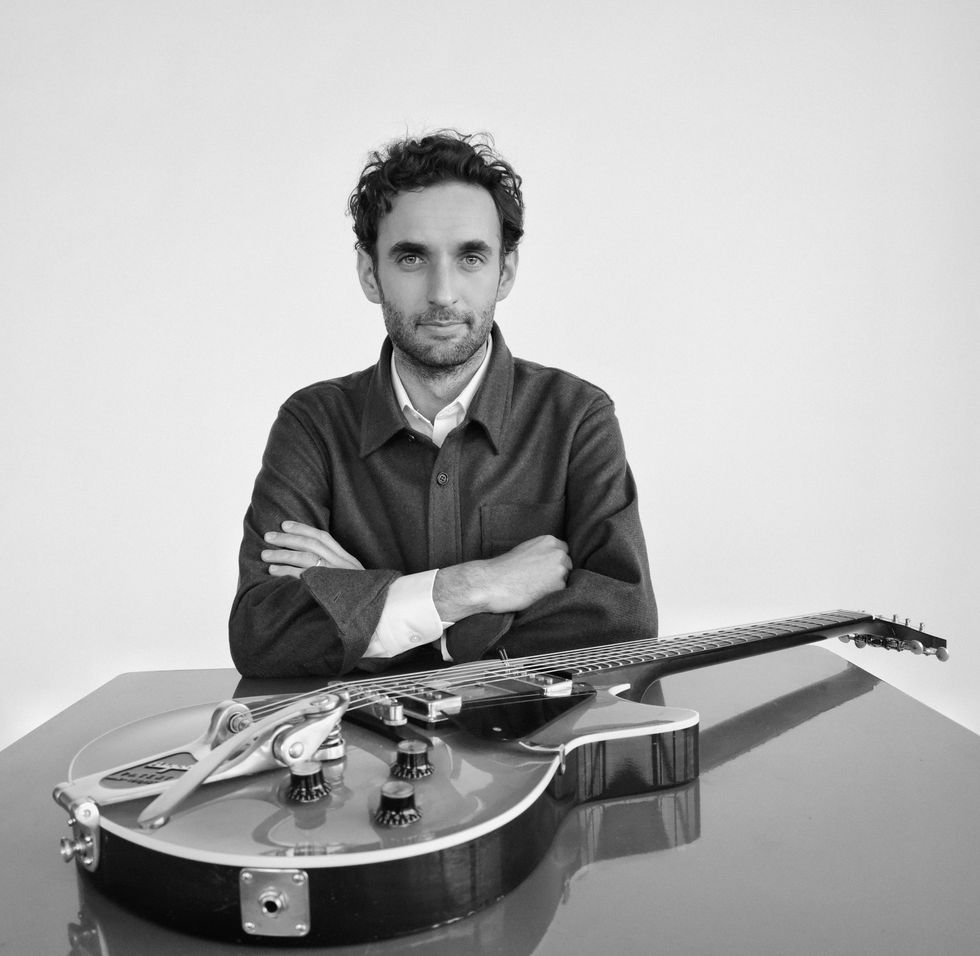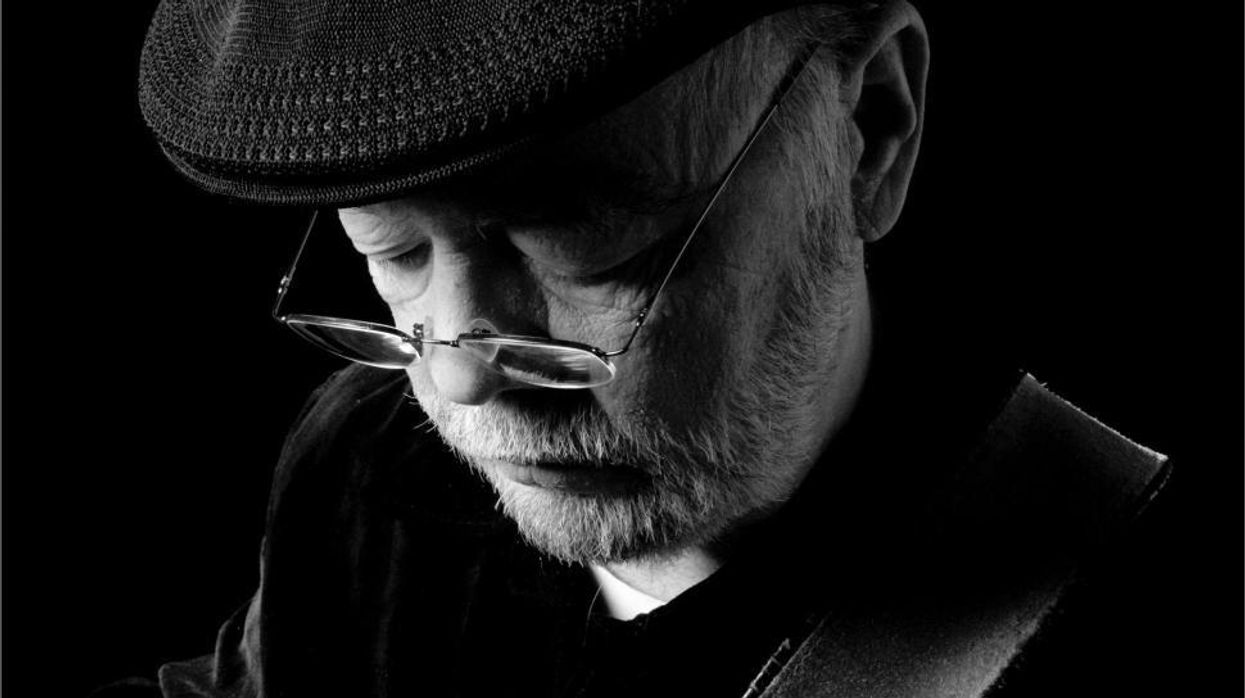Many guitarists and former musical collaborators were dismayed to learn that Mick Goodrick died on November 16, 2022, at age 77, due to Parkinson's disease. “Mr. Goodchord,” as he was affectionately known by those lucky enough to have studied with him, encouraged two generations of guitarists to venture beyond the limits of their imagination and explore the fretboard in novel ways.
Based in Boston, Mick taught at Berklee and the New England Conservatory, and his notable students include John Scofield, Bill Frisell, Mike Stern, Wolfgang Muthspiel, and Julian Lage. Mick's The Advancing Guitarist is essential reading for modern jazz pickers, and his 1979 ECM album In Pas(s)ing informs the sound and vibe of impressionistic jazz guitar to this day.
When I started studying with Mick at Berklee in 1969, he was 24 and a recent grad of what was then a hardcore jazz institution. As a 17-year-old rock guitarist, one of only a handful in the school at the time, I had a lot to learn about harmony and jazz improvisation. But Mick was patient and opened my ears and mind to musical possibilities I had never considered.
“Mick was patient and opened my ears and mind to musical possibilities I had never considered.”
In the classic Zen tradition, Mick taught by asking questions of a student, rather than supplying answers. For example, in one lesson he said, “I’m going to improvise single-note lines and you’ll improvise chordal accompaniment. Ready?” We began and played for what felt like an eternity. When we stopped, he stroked his large black beard and then quietly said, “Why did you play so many diminished chords?” I didn’t have a coherent answer, and when I left the lesson I kept asking myself that very question. I finally realized that, as a rocker, diminished 7 chords were the “jazziest” ones I knew, and that perhaps I should focus on expanding my harmonic repertoire. Mick let me find the answer as a result of this experience, rather than stating what was—no doubt—obvious to him. That’s the way he taught. Dig deep within, grasshopper.
My first lesson with Mick was a mind-bender, and you can read the details in the June 2019 Tuning Up, “Knowledge Is Not Like a Hamburger.” Again, dig deep. No, deeper.
Mick was not one to follow convention or be restrained by rules. In Berklee, at that time, it was a requirement for guitarists to take their proficiency exams using a flatpick. This was an effort to establish “plectrum guitar” as equivalently legitimate to classical guitar. But in all the lessons I took from Mick, he played his Ampeg Dan Armstrong see-through Lucite solidbody using a fully developed thumb-index-middle-ring fingerstyle technique. This made an impression on me and all his students. Mick was deeply into voice-leading and, as he explained, playing fingerstyle was the best way to reveal this harmonic movement.
Over the years, I’ve met other guitarists who studied with Mick, and when we riff about the experience, it inevitably boils down to two words: game changer. Thank you, Mick, for your vision and wisdom.Pat Metheny & Mick Goodrick - Meditation [HD]
Here, Mick Goodrick and Pat Metheny, who began their musical partnership playing duets around the Boston area, navigate beautifully on Antonio Carlos Jobim’s “Meditation” at the Montreal Jazz Festival in 2005.
Julian Lage Recalls His Ultimate Mentor
It was so beautiful, because I remember I went into his office and I was very excited and intimidated, but eager to work with him. He said “Well, how’s your soloing?” Just kinda like an assessment. I said, “Well, I think it's okay.” He said, “Well, how’s your comping?” I said, “Well, I don’t know. I think it’s okay too.” And he said, “Well, then I guess you don’t need to be here.” And I was like, “No, no, no, no. They’re not that good.” [Laughs.] He was very, very pointedly sweet with me. I know everyone had different experiences and, I think, always positive. But with me, he really engendered a sense of we’re in it together.

Photo by Shervin Lainez
We were kind of research buddies, is how it felt. And so, from those questions, what he was encouraging—or at least my interpretation—was that you need the ability to assess yourself in a productive way and not just a self-hating way. He wasn’t looking for me to say, “Please fix me.” You needed to know where you are and here are ways you can assess it and here are things you can do to improve those things. I still feel like that’s a revolutionary way to work with a student.
I think back to playing with him … we played a lot together in his office. That was the predominant thing we did. I remember vividly how attuned he was to actual sound. We think of people often who are so versed in pedals to be sound masters … the soundscapes and all this. For me, Mick … I guess the word would be spectrographic, but his sense of decision-making was very much about frequency and balance and volume. And like any great instrumentalist, he had tremendous command over these things. It wasn’t the lack of a point of view about it. It was like listening to someone play Chopin. That’s how it always felt with Mick. He was making decisions that from a frequency sound point of view were deeply compelling. And I’ve always thought that was the baddest thing I’ve ever seen. —Julian Lage












![Rig Rundown: Russian Circles’ Mike Sullivan [2025]](https://www.premierguitar.com/media-library/youtube.jpg?id=62303631&width=1245&height=700&quality=70&coordinates=0%2C0%2C0%2C0)
















